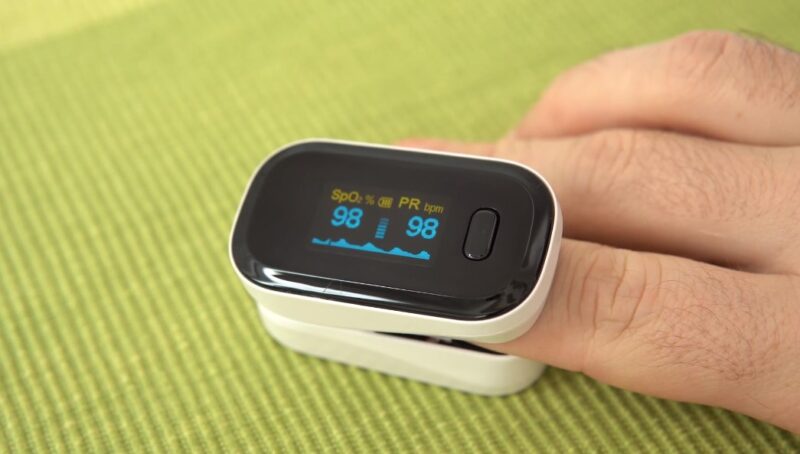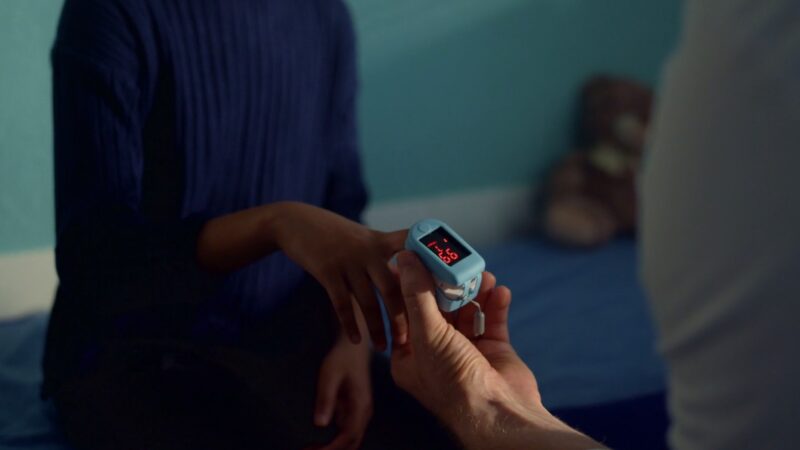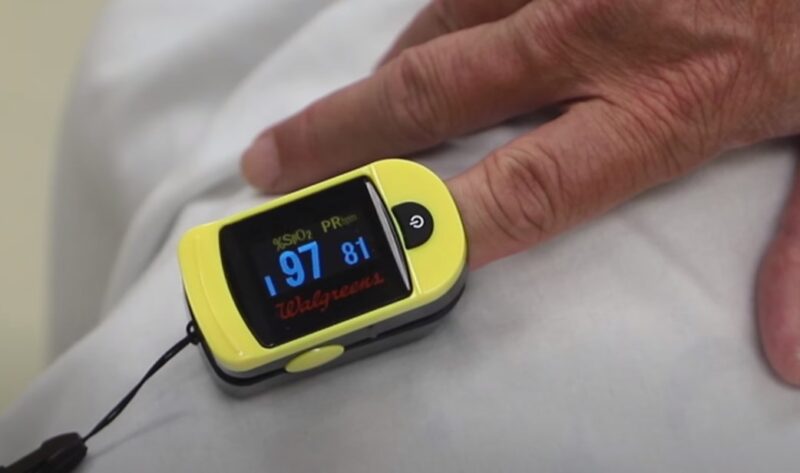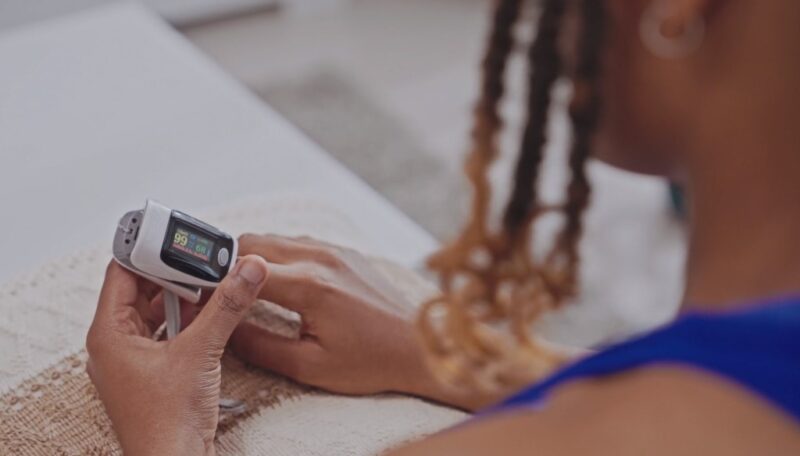Oxygen is vital for life, and its transportation in our blood is crucial for our survival.
SaO2, or oxygen saturation, is a key metric in understanding how well oxygen is carried in the blood.
Today, I will discuss SaO2, explaining its significance, how it is measured, and its implications on health.
Key highlights
- The Basics of SaO2: Readers will learn that SaO2, or arterial oxygen saturation, is a measurement of the percentage of oxygen-saturated hemoglobin in the blood and is crucial for assessing how well the body is oxygenated.
- Measurement Methods: The post explains two primary methods for measuring SaO2: arterial blood gas (ABG) analysis, a more accurate but invasive method, and pulse oximetry, a common non-invasive technique.
- Interpreting SaO2 Levels: It highlights the normal range of SaO2 (95% to 100%) and discusses the health implications of low SaO2 levels, including potential causes like COPD and heart conditions.
- Factors Influencing SaO2: The article covers various factors that can affect SaO2 readings, including external influences like nail polish in pulse oximetry and physiological factors such as anemia and carbon monoxide poisoning.
- Clinical Importance and Future of SaO2 Monitoring: Emphasizes SaO2’s role in monitoring respiratory and cardiac conditions, perioperative and emergency care, and discusses advancements in SaO2 monitoring technology for future healthcare applications.
The Basics

SaO2 stands for arterial oxygen saturation. It is a measure of the amount of oxygen bound to hemoglobin in the blood compared to the total hemoglobin capable of carrying oxygen.
Expressed as a percentage, it indicates how much of the hemoglobin in your arteries is carrying oxygen.
The Importance of Oxygen in the Blood
Oxygen is essential for the metabolic processes in the cells of our body. Hemoglobin, a protein in red blood cells, transports oxygen from the lungs to the tissues and organs.
A high SaO2 level means that most of the hemoglobin is used to transport oxygen, which is ideal for healthy bodily functions.
Measuring SaO2

The gold standard for measuring SaO2 is arterial blood gas (ABG) analysis. This test requires a sample of blood taken from an artery.
It provides accurate measurements of SaO2, along with other critical parameters like pH, partial pressure of oxygen (PaO2), and carbon dioxide (PaCO2).
Pulse Oximetry: A Non-Invasive Alternative
Pulse oximetry is a common, non-invasive method for estimating SaO2.
It uses a sensor placed on a thin part of the patient’s body, usually a fingertip or earlobe, and works by passing light through the skin to measure the light absorption by oxygenated and deoxygenated blood.
Comparison of ABG and Pulse Oximetry
| Measurement Method | Invasiveness | Parameters Measured | Accuracy |
| ABG Analysis | Invasive | SaO2, PaO2, PaCO2, pH | High |
| Pulse Oximetry | Non-invasive | Estimated SaO2 | Moderate |
SaO2 Levels and Their Meaning

Normal
A healthy individual typically has an SaO2 between 95% to 100%. Levels below 90% are considered low and can indicate a medical condition requiring attention.
Low
Low SaO2, or hypoxemia, can result from several conditions, including:
- Chronic obstructive pulmonary disease (COPD)
- Asthma
- Pneumonia
- Heart conditions
- Sleep apnea
Hypoxemia can lead to symptoms like shortness of breath, confusion, and in severe cases, organ failure.
Factors Affecting Readings

External Factors
- Nail polish or false nails (in pulse oximetry)
- Ambient light interference
- Skin pigmentation
Physiological Factors
- Anemia (reduced hemoglobin)
- Circulation issues
- Carbon monoxide poisoning (false high readings)
Clinical Application

Monitoring Respiratory and Cardiac Conditions
SaO2 is crucial in managing diseases like COPD, asthma, and heart failure. It guides oxygen therapy and helps assess the effectiveness of treatment strategies.
Perioperative Monitoring
During surgery, continuous SaO2 monitoring is essential to ensure adequate oxygenation.
Emergency Medicine
Rapid assessment of SaO2 is critical in emergencies like cardiac arrest or respiratory failure.
SaO2 in Relation to Other Blood Gas Parameters
The SaO2-PaO2 Relationship
While SaO2 indicates the percentage of oxygenated hemoglobin, PaO2 measures the actual pressure of oxygen in the blood. The relationship between these two can be complex, as it is affected by factors like age, altitude, and lung function.
The Role of pH and PaCO2
Blood pH and PaCO2 levels can influence oxygen binding to hemoglobin, thus affecting SaO2.
For instance, a high PaCO2 (hypercapnia) can lead to a lower pH (acidosis), altering hemoglobin’s affinity for oxygen.
Oxygen-Hemoglobin Dissociation Curve

The oxygen-hemoglobin dissociation curve is a key concept in understanding SaO2. This curve represents the relationship between the PaO2 and the SaO2.
Factors that shift this curve impact how easily hemoglobin releases oxygen to the tissues.
Shift to the Right
A rightward shift implies hemoglobin releases oxygen more readily, but it’s harder to load oxygen in the lungs.
Conditions causing this shift include:
- Increased body temperature
- Acidosis (lower pH)
- Elevated levels of CO2
- Increased levels of 2,3-DPG (a substance in red blood cells)
Shift to the Left
Conversely, a leftward shift means hemoglobin holds onto oxygen more tightly, impacting the release of oxygen to tissues. Causes include:
- Alkalosis (higher pH)
- Decreased levels of CO2
- Lower body temperature
- Decreased levels of 2,3-DPG
Factors Affecting the Oxygen-Hemoglobin Dissociation Curve
| Factor | Effect on Curve | Impact on Oxygen Release |
| Temperature | ↑ Temperature = Right Shift | Easier Release |
| pH | ↓ pH = Right Shift | Easier Release |
| CO2 | ↑ CO2 = Right Shift | Easier Release |
| 2,3-DPG | ↑ 2,3-DPG = Right Shift | Easier Release |
| Alkalosis | ↑ pH = Left Shift | Harder Release |
| Hypocapnia | ↓ CO2 = Left Shift | Harder Release |
| Low Temperature | ↓ Temperature = Left Shift | Harder Release |
SaO2 in Different Populations

Children and Neonates
Children and neonates typically have higher normal SaO2 values.
However, they are also more susceptible to rapid desaturations due to their higher metabolic rates and smaller oxygen reserves.
Elderly
In the elderly, a slightly lower SaO2 can be normal due to changes in lung function and chest wall mechanics with age.
However, any sudden drop should be evaluated.
Athletes
Athletes, especially those in endurance sports, often have higher than average SaO2 levels at rest, reflecting their enhanced lung capacity and efficiency in oxygen utilization.
SaO2 in High Altitude
Living or traveling at high altitudes presents a unique challenge to oxygen saturation. The lower atmospheric oxygen pressure reduces PaO2 and, subsequently, SaO2.
However, the body gradually adapts by increasing breathing rate, heart rate, and the production of red blood cells.
Interpretations in Clinical Practice

As a Diagnostic Tool
SaO2 alone should not be the sole diagnostic criterion. It must be interpreted in conjunction with other clinical findings and tests.
For example, a patient with chronic lung disease might have a lower “normal” SaO2.
In Treatment Decisions
Oxygen therapy decisions often rely on SaO2 readings. However, overtreatment with oxygen (hyperoxia) can be harmful, especially in conditions like COPD, where it can suppress the drive to breathe.
Technological Advances in Monitoring

Recent advancements in technology have made SaO2 monitoring more accurate and accessible.
Wearable devices with pulse oximetry functions are becoming popular for personal health monitoring, especially in sports and fitness.
Future of Monitoring
Future developments may include more sophisticated, non-invasive methods for continuous SaO2 monitoring, possibly integrated with other vital signs for comprehensive health tracking.
FAQs
Can dehydration affect SaO2 readings?
Yes, dehydration can lead to thickened blood, potentially affecting readings by making it harder for oxygen to bind to hemoglobin.
Does high altitude training affect an athlete’s SaO2 in sea-level conditions?
Yes, high altitude training can lead to physiological adaptations that improve oxygen delivery and utilization, often resulting in higher SaO2 levels in sea-level conditions.
Can anxiety or stress cause changes in SaO2 levels?
Anxiety or stress can cause rapid breathing (hyperventilation), which might temporarily increase levels by bringing in more oxygen.
However, this effect is usually not significant in healthy individuals.
Is there a difference in SaO2 levels between males and females?
Generally, there are no significant differences in levels between males and females, although factors like hormonal changes can sometimes cause minor variations.
Can smoking affect SaO2 readings?
Yes, smoking can lower these levels due to the presence of carbon monoxide, which competes with oxygen for binding sites on hemoglobin.
Are there seasonal variations in SaO2 levels?
Seasonal variations are not significant in healthy individuals. However, factors like temperature and seasonal allergies can indirectly affect respiratory health, which may impact readings.
Final Words
SaO2 is a vital parameter in medical diagnostics and patient care. Knowing its measurement, implications, and the factors affecting it is crucial for both healthcare professionals and patients.
As technology advances, the methods of measuring and interpreting SaO2 continue to evolve, enhancing our ability to care for those in need.
This in-depth exploration of SaO2 underscores its significance in the medical field and highlights the need for accurate measurement and interpretation in various clinical scenarios.
As our knowledge and technology advance, the importance of understanding and utilizing SaO2 data in healthcare will only grow.

